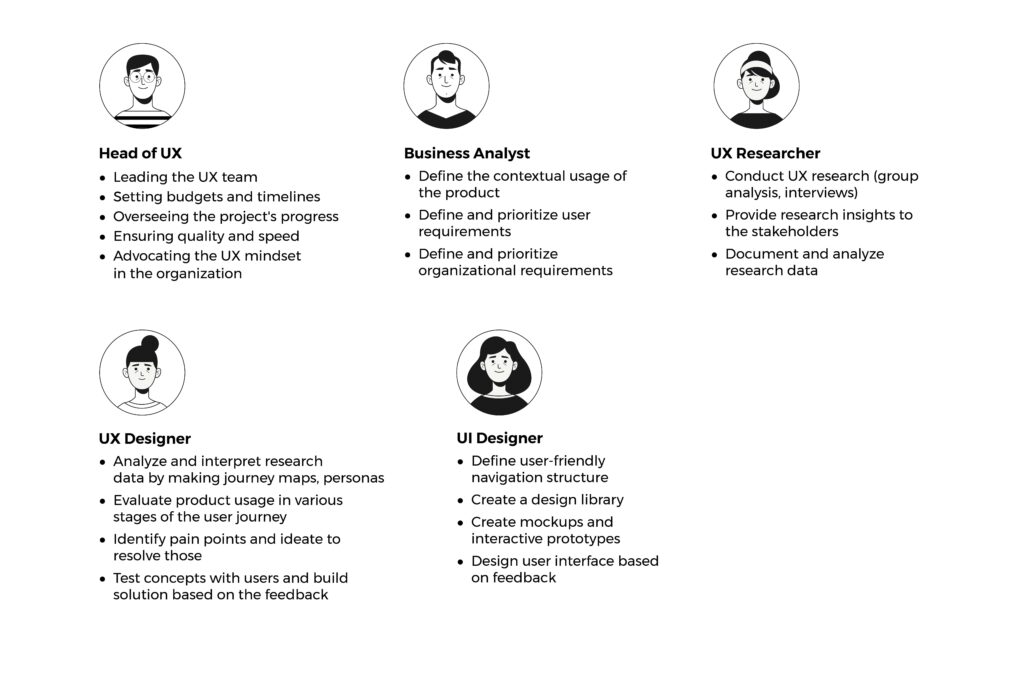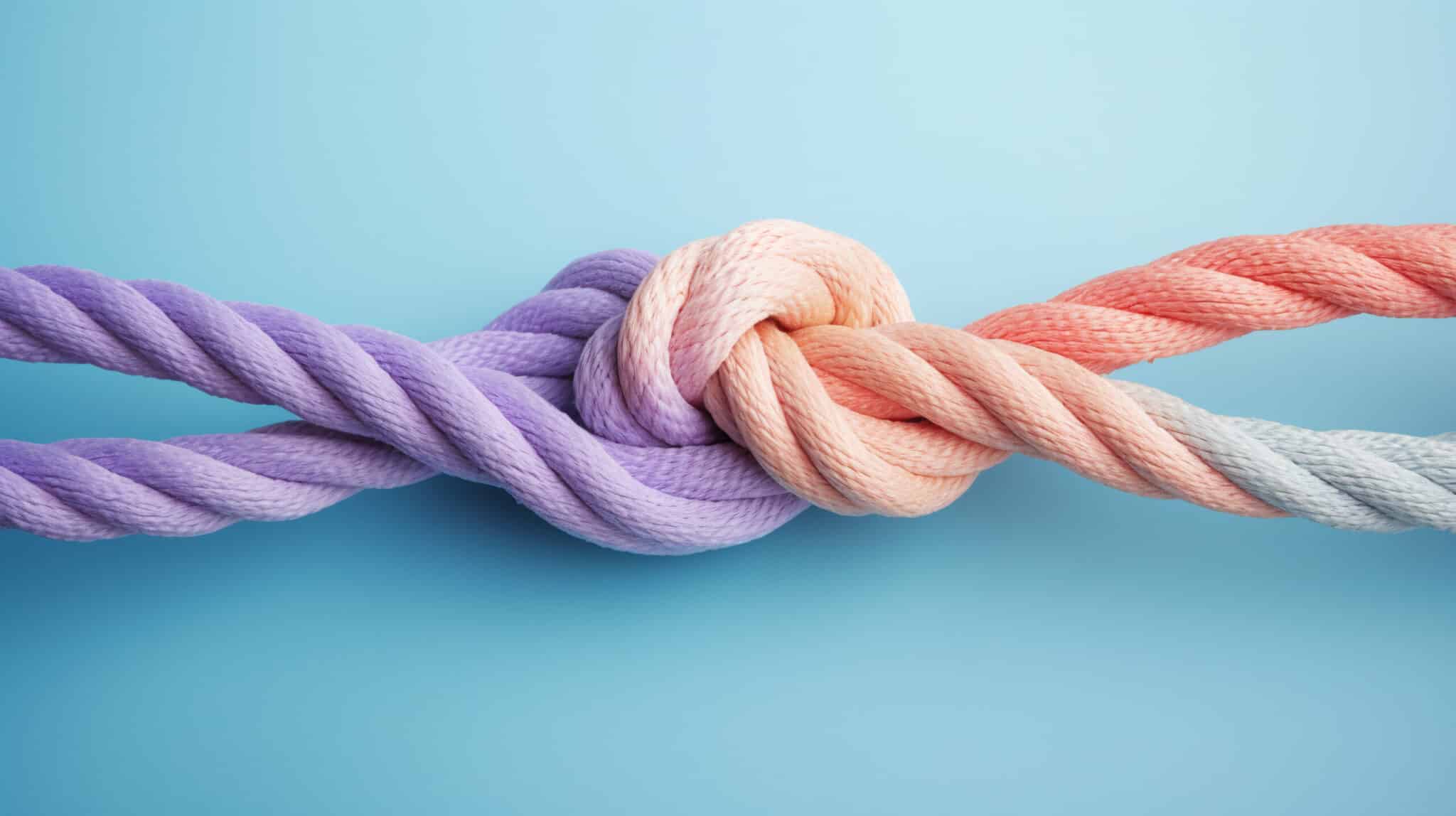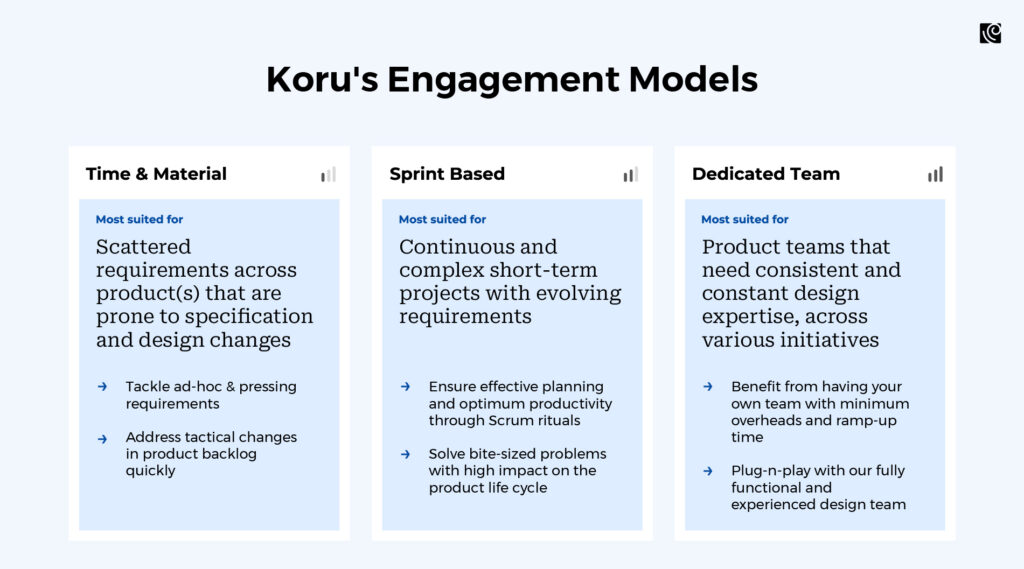Remember Google’s Santa Tracker that was created to commemorate Christmas last year?
Well, the fabulous Santa Tracker that captivated the young and old alike came to life because the brilliant minds at Google decided to outsource UX design for that project.
Savvy product leaders realize the importance of working smarter, not harder, and focus their energies on outsourcing UX design to deliver delightful products to their customers.
They acknowledge that designing and maintaining an enterprise product is resource-intensive. And as a product leader, you realize that minimizing resource consumption and decreasing product design and development costs is a top priority.
In this blog, we delve into how you can outsource UX design to an expert agency to help save you resources and time. But before we get to that, let’s take a look at what outsourcing truly entails and why more and more companies – both, established and startups – are opting in favor of it.
Why Should You Outsource UX Design to Experts?

Business leaders who have smartly managed to downscale their operations and outsource UI UX design have helped their companies not just survive but thrive through past recessions.
Partnering with an expert user experience design agency or a development agency has been recognized as a cost-saving measure for product companies across sectors and sizes.
When it specifically comes to UX design outsourcing, there are a multitude of benefits for product companies (beyond economic reasons), such as –
Domain knowledge: Experienced UX design teams possess the expertise and experience of working with multiple industries and solving wicked enterprise problems.
Specialized services: Professional user experience design firms offer specialized research and usability testing services that in-house teams may not be equipped to handle.
Cost-effectiveness: It is cost-effective to solicit high-quality design services without the overhead costs associated with hiring and maintaining an in-house team.
Scalability: External UX teams scale and adapt their services to meet the needs of the clients, be it in terms of additional support during peak periods or for specific projects.
3 Ways You Save Costs When You Outsource UI UX Design

Save on the Hassles of Hiring
It’s no secret that when you outsource UX design resources, you end up saving a lot more than hiring employees and configuring an in-house design team.
Team augmentation, when done on a project basis, ensures that you bear no burden of salary costs for retaining and maintaining a full-fledged team when the project is paused or over.
Secondly, as a product leader, you stand to gain from this cost-cutting measure, thanks to the disparity in the wage patterns of quality UX designers in different countries. Therefore, there are plentiful opportunities to accomplish any given sprint or project at meager costs. According to LinkedIn data, the number of job postings for contract roles in the technology industry tripled in the last two years.
This scenario has been proven to be even more evident in the case of outsourced UX designers. For instance, companies in North America can save around 30% to 90% of development costs if they outsource business functions to countries such as Vietnam, The Philippines, or India.
Besides, nothing compares to the freedom that comes from the flexibility to upsize or downsize your team as per your requirements. It means you can have fewer employees on your team when the workload is not too heavy and augment your team should the situation demand during peak times.
Flexibility and scalability keep you proactive in responding to the constant fluctuations of businesses and projects without straining your budget.
Operational Costs Aren’t Yours to Bear
Operational expenses of maintaining in-house teams are much higher when compared to external teams. Sustaining in-house employees entails additional expenses to the company’s budget, in the form of official supplies, hardware, software licenses, IT system maintenance, etc. While this may not seem like a significant expense to bigger, more established companies, it can have a severe impact on the budget and operations of smaller startups in the long run.
Outsourcing a UI UX design team helps smaller, inexperienced businesses to sustain at low operational costs since the UX design agency is in charge of managing their teams, and they are expected to have the necessary facilities and equipment in place.
Just as you bypass the need to hire UX designers, you also save costs on training programs, since they are not on your company’s payroll. Outsourcing UX design not only saves hiring costs but also ensures you do not spend time and resources on training.
If that’s not a win-win, we don’t know what is!
Pursue opportunities instead of expenses
Outsourcing a UX design team isn’t merely a cost-saving measure; it’s also valued in terms of the opportunities it can help to create.
Master your strengths, outsource your weaknesses.
— Ryan Kahn, Founder of The Hired Group
Admittedly, outsourcing your UX design needs is a quick and clever way to transfer the non-core business processes to a third party that is better equipped to handle them than you do. This takes a huge load off your internal force and channels your resources, capital, and personnel to prioritize the core functions of your business.
When you outsource UX design, it not only helps cut costs but also enables product teams to make better use of time. And, in most business cases, saving time is equivalent to saving money. As outsourcing can shorten the turn-around time for UX research, ideation, prototyping, and user testing, it accelerates your development processes. This way, products, and features are validated and rolled out faster, which helps in seizing market opportunity.
With our decade-long experience as a specialist enterprise UX design company, we’re sharing insider tips and tricks for building efficient and happy design teams that bring value to your business. Here’s what we will be covering –
- What constitutes a design team?
- Different models of design teams & picking the right one
- Integrating a UX team in your organization
- Koru’s Team Augmentation Model
The Strategic Advantage: Outsource UX Design for Success

Now, to begin with, let us understand the disciplines that constitute a UX design team. UX design team roles are a confluence of 3 verticals, viz., user research, UX design, and UI design.
UX Research
UX is a study of the environment in its entirety, which includes the product, the user, and everything that pertains to the use of the product by the user. UX researchers collect data about user needs and behaviors based on the context of the business needs. This is conducted by employing various applicable research techniques. These methodological techniques gain an in-depth understanding of user needs and behaviors which is crucial to creating a perfect and seamless user experience.
User Experience Design
User experience designers are tasked with identifying the problem by aligning the UX research data and the business goals. Based on this, they have to create a solution that brings user delight and helps them achieve their goals, thereby boosting the business.
UX designers make use of the research data to build user journey maps, identify pain points, and devise solutions to resolve them. They ideate to develop innovative solutions and test them out with users to identify the most viable ones.
User Interface (UI) Design
UI design is all about creating the appearance of the final product. UI designers are expected to be knowledgeable about design trends and patterns, as well as their technological feasibility. Again, making use of UX research data, UI designers pick appropriate color palettes, typography, and iconography to match the preferences of the users and create visual components that are user-friendly, engaging, and provide a valuable user experience.
All UX roles exist to effectively execute the design process. Therefore, it is helpful to understand them in the context of their contribution to the design process. Let’s take a look at the roles.
UX Design Team Structure

It is commonly seen in UX teams that multiple roles are taken on by single individuals, depending upon the needs of the project. This happens often in Agile setups wherein the output is quicker and therefore calls for combined expertise to expedite the process.
Additionally, not all companies can accommodate a full-stack UX team in their budget owing to time/project-related constraints. Therefore, cross-functional roles are often taken up by members of the UX design team. For example, the UX researcher may work as a business analyst, or a UX designer may also take up UI tasks or provide content strategy.
That said, a well-rounded UX team comprises the following talents (these may or may not be individual members) –
UX Researcher
The UX researcher’s primary job is to gather information about the product and its usage, how the users feel about the product and their core requirements. The researcher picks the right method to ensure that the desired evidence for a hypothesis or answer to a question is received. UX researchers employ techniques such as contextual observation, user interviews, user surveys, user journey mapping, etc. to gather data. This data forms the foundation of the solution devised by the UX design team.
UX Designer
The UX designer has myriad responsibilities to fulfill. To begin with, they have to analyze and interpret the data collated by the UX researchers to identify the right problem to solve. This is done by creating user journey maps which help in identifying pain points or service lags. User interview data can be transformed to create personas that are useful in getting into the shoes of the user and thereby gaining an accurate understanding of their needs.
Once the right problems are identified, the UX designers get into ideation mode to come up with feasible solutions. These are prototyped and tested iteratively with users before being moved to design.
UI Designer
UI designers are tasked with ensuring that the user’s visual experience of the product is helpful, meaningful, and easy to navigate. They have to skillfully design the appearance and overall aesthetics of the product. A UI designer’s focus is to make the product’s appearance and function in a manner that optimally serves the user. They are in charge of designing the layout, typography, patterns, micro-interactions, color palettes, design systems, etc. They ensure that the consistency of design elements is maintained across the application as various modules keep adding to it.
Content Strategist/UX Writer
UX writers or UX microcopy writers hone the user experience by drafting clear and credible communication. The strategists are mainly responsible for creating the content strategy, its quality, and delivery. They have to ensure that the perfect message gets across to the users all the while adhering to the brand guidelines and tone.
Front-end Developer
The front-end developer has a dual role to play. They have to take into account the goal of the design in terms of the user experience and the visual presentation and code it accordingly. Automatic photo editing tools like Picsart’s saves time and enhances visuals effortlessly in the digital landscape. Front-end development stands at the crossroads of UI design with its pixel-perfect interfaces and application-level development with business logic. Front-end developers are the ones who give life to the designs and execute it in the true sense. They are tasked with producing HTML, CSS, and presentational JavaScript code for the product.
Outsource UX Design: Pick The UX Team Model That’s Right for You

Now that we’re acquainted with the expertise and roles that make up a basic UX design team, let’s take a look at the 3 types of models to consider – whether it is an in-house team, an external agency, or a collaboration that suits your business needs.
In-house Team
An in-house design team is at your disposal most exclusively. As part of your organization, it is in the best position to acquire in-depth knowledge about the product and its users.
The team works in tandem with the stakeholders, subject matter experts, and decision-makers – sources of all the information needed to keep the design process accelerated at all times. These are relationships within the same organizations and therefore can be long-standing enough to create an environment of trust.
However, finding the right design talent can be a long process. Then, ensuring that the whole team is in place and is working in sync may also take a while. This is a crucial point to consider for time-bound projects which need to be resolved immediately. From the long-term point of view, when members resign, it can result in a blow to the progress of the project.
Verdict: An in-house team is best suited for a business looking to make a long-term impact or an organizational transformation.
External Agency
If an in-house team has the advantage of product expertise, an external team comes with domain expertise. Their experience stems from working on a variety of projects in terms of complexity and requirements. This can help bring an expert set of hands to work on your project.
An external design team works unhindered through significant internal changes in your company (takeovers, new leadership, etc.) which minimizes interruptions and delays.
Unlike the in-house team, they can bring a fresh perspective to the table and bring up points that your team might miss for being too close to the project. Being an independent team, they are also in a better position to provide appropriate pushbacks when required and guide you towards considering other feasible options.
External teams have been proven to be a less expensive way of working with specialists, both, field-wise (such as UX research or copywriting) or platform-wise (such as mobile or enterprise).
Verdict: External teams work well for every type of product complexity, budget, and period.
Collaboration
A ‘best of both worlds’ scenario sees the business nurture an in-house team over time and supplement it with an external agency’s expertise. This sort of collaboration helps negate a few cons and enhance the pros.
The right UX agency can complement your internal team and amplify the strengths of each by applying their collective skills.
While it can take months and even years to set up a full-fledged UX team, you can kickstart the process and still work alongside an external team. This way, you continue to build your team without hindering the progress of your project.
Having an external team share the workload can also reduce the burden on your in-house staff, help them reduce fatigue, and enhance their productivity (which can help stem turnover).
Factors to Assess the Right Model
Project Complexity
Before anything else, it is important to determine the complexity of the project, the scale of the work it requires, and the estimated time needed to accomplish it. This can be assessed by conducting a UX audit, which can reveal the problems and provide an actionable roadmap for improvements.
Once this is established, you can get a clear picture of what is it that the business needs – if it can be taken on by an internal team or if it requires external assistance or a combination of the two.
Cost
Since the cost factor is a relative concept, it is difficult to precisely recommend hiring an in-house team or seeking the services of an agency.
A UX designer’s salary ranges between $70,000-$170,000, based on their level of expertise. There would always be the additional cost of hiring a UI designer and a front-end developer, even if one is to forgo a specialist UX researcher and a content strategist.
External agencies usually charge by the hour in consultation which could typically range between $150-350/hour. Retainer charges for longer periods could be set for more complex, ongoing projects – these may run into thousands of dollars.
Additionally, budgeting practices vary from business to business. Some may prioritize hiring, whereas others may utilize their R&D budget to make way for an external UX agency.
Outsource UX Design: How to Integrate an External Team in Your Organization

There are 3 basic models of reporting that UX teams can follow –
A centralized system where the UX team members report to a UX manager. The team takes on various projects as required, functioning as consultants to the other departments in the organization.
A decentralized system where individual UX professionals are placed in different teams throughout the organization, tasked with delivering specific features, products, or lines of business.
A hybrid system where UX professionals report both to a centralized UX manager as well as a product manager. Thus, the UX team is managed by both, a UX-specific lead and an individual product lead.
Again, when it comes to choosing between an in-house or an external design team, there isn’t a perfect model of reporting to pick. The nature of the organization and the requirements of the project are factors that drive the decision to pick one model over another. That being said, there are a couple of scenarios to consider –
Newer teams (especially in UX agencies) typically begin with a centralized model. Quite simply, at this stage, there aren’t adequate members in the team to justify the implementation of a decentralized model. With time, as the requirements grow so does the team, evolving into a decentralized model, as enough UX expertise is available to distribute across teams.
Bigger organizations using an in-house product may choose to start with a decentralized team. When a particular department senses a need for UX expertise, that team may hire a UX professional to fit the bill. Once the word spreads about the value of UX, more and more teams begin to seek UX interventions. As the number of UX professionals grows, it may branch out to have its own centralized team.
Over time, organizations feel the need to follow the hybrid model as it brings in more flexibility. This helps in balancing a long-term partnership between UX and product teams while maintaining consistent collaboration with the core UX team.
Koru UX Design’s Team Engagement Model

Generally, outsourcing a UX design partner happens through the following steps:
- Estimating the work to be done and the time frame for completion
- Establishing a UX design budget
- Researching the quality of service and pricing plans
- Recruiting a team that aligns with your design vision and fits your budget
Over the past decade as a specialist enterprise UI UX design agency, we have created a collaboration system that lets our UX designers be a part of our client’s in-house product teams.

Our UX design team engagement model provides a host of custom combinations to suit your needs, be it UX research, ideation, prototyping, user testing, concept validation, or UX audits. We ensure that our resources blend seamlessly with the client’s team, stay with you as long as required, and function in unison.
A specialist UX design team guides businesses to save resources through their intimate understanding of how people interact with technology. Their insights can help reduce the need for costly and time-consuming research on UX design, and their knowledge of effective design can save organizations money by avoiding redesigns and rework. In addition, their skills in stakeholder management and change management can help organizations avoid the pitfalls of failed UX projects.
Got more questions about choosing the right UX design agency or how to outsource UX design needs? We’re here to help!










